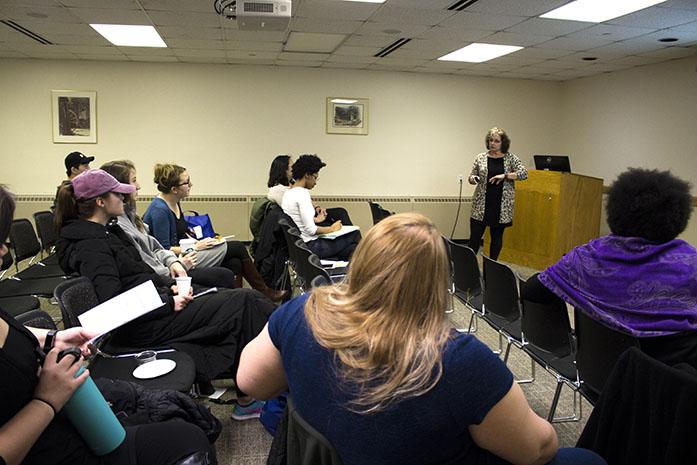By Jason Estrada
Shelter House provides help for the homeless to improve the quality of their lives as they move beyond homelessness.Crissy Canganelli, the Shelter House executive director, doesn’t just want to provide safe shelter for the homeless. Her mission is to put an end to homelessness.
The causes of homelessness are, among others, the lack of jobs paying living wages, limited affordable housing, no medical coverage for substance abuse and mental services, family breakups, and domestic abuse.
“It’s understanding what the issues and challenges are that the individuals and families have as they’re coming to us,” Canganelli said.
When the homeless approach the Shelter House, employees help sign them up during the application process for housing assistance or accessing mental-health services.
“We’re not individually providing all of those services, working with and knowing the different community providers that we can connect people with will get those supports,” she said.
When staying in the shelter, there is a list of rules occupants must follow, including being sober and not threatening anyone, which will make an unsafe environment for everyone. If people don’t follow the requirements, they will be evicted.
Other requirements are related to their progress to move forward into the world. They must work with their case manager to find employment, save 75 percent of their income, and follow through on their goals and objectives. Meetings are held every week to ensure that they’re invested in their plan. If progress is slowed or not made, they are denying other people access.
“You could have an individual or a family, if mom goes out and decides to party and blows off all of the money she saved, we’re evicting her, Canganelli said. “We’re evicting you and your family because you wasted everything that you were building on,” she said.
In addition to Shelter House being an option for help, the City Council has also addressed helping the homeless.
City Councilor Rockne Cole said that one of the significant achievements Housing First, a newly developed strategy that prioritizes providing people experiencing homelessness with permanent housing as quickly as possible.
“The view is that we need to be able to address the housing first, then after that they can address the substance abuse, where traditionally the model was if you had a substance-abuse problem, you couldn’t get into housing until you address the substance-abuse problem,” he said.
A Housing First ordinance was passed six or seven months ago that would allow the City Council to have this kind of facility. They believe a lot of progress will be made and the homeless will be able to stabilize their housing situation, which will address the homelessness issue.
If shelter isn’t available, then there are other ways people can help the homeless.
Megan Hustings, the interim director of National Coalition of the Homeless, said the best thing that people can do to help is to get to know someone who is homeless.
Some tips are giving them a couple of bucks, starting up a conversation, and acknowledging their existence and humanity.
“Treating it as a social ill or as someone’s fault, really is kind of based on stereotypes, and that’s not the case,” Hustings said. “Sometimes, the biggest thing people could do is when they pass somebody who appears homeless on the streets asking for a few dollars is to treat them like a human.”







